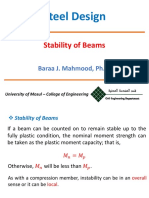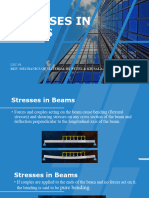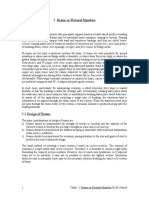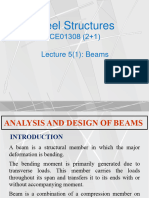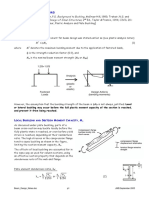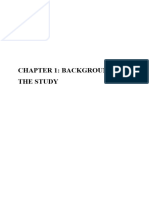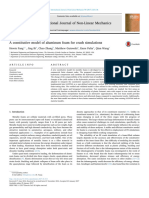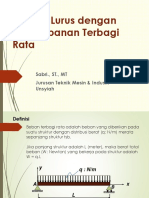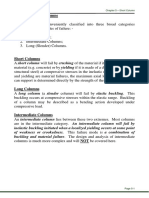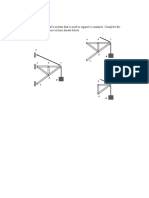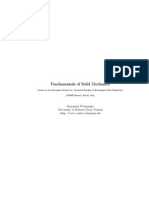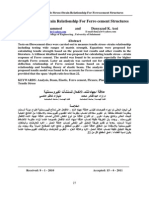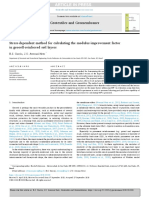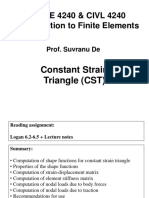0% found this document useful (0 votes)
79 views14 pagesModule 2. Beam Analysis (Part 1)
The document discusses the analysis of steel beams, including determining the nominal moment strength and classification of beam sections. It covers bending stress, flexural strength of compact sections, and failure modes such as lateral torsional buckling, flange local buckling, and web local buckling. Sample problems are also presented on determining elastic section modulus and yield moment.
Uploaded by
xppen78Copyright
© © All Rights Reserved
We take content rights seriously. If you suspect this is your content, claim it here.
Available Formats
Download as PDF, TXT or read online on Scribd
0% found this document useful (0 votes)
79 views14 pagesModule 2. Beam Analysis (Part 1)
The document discusses the analysis of steel beams, including determining the nominal moment strength and classification of beam sections. It covers bending stress, flexural strength of compact sections, and failure modes such as lateral torsional buckling, flange local buckling, and web local buckling. Sample problems are also presented on determining elastic section modulus and yield moment.
Uploaded by
xppen78Copyright
© © All Rights Reserved
We take content rights seriously. If you suspect this is your content, claim it here.
Available Formats
Download as PDF, TXT or read online on Scribd
/ 14




